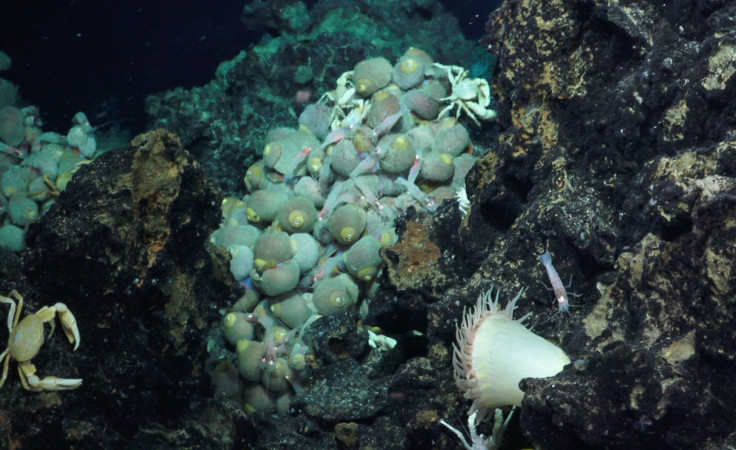Rare high-quality footage shows newly discovered deep-sea black smokers in amazing detail
Scientists are poring over the videos of the hydrothermal vents to see how many new species they can spot.
Newly discovered 100-foot-high hydrothermal vents in a poorly explored part of the Pacific Ocean are teeming with life, rare high-quality videos show. The scientists who discovered the vents say that they are likely to be home to a host of species new to science.
The rare video of isolated deep-sea vents shows them to be crawling with hairy snails, shrimps, crabs, mussels, limpets, squat lobsters, anemones and polychaete worms. It's thought that among these animals there are likely to be many unique and as-yet-unknown species.

The vents were discovered more than 100 miles away from other vents in the Mariana trench, which lies to the south of Japan. Such isolated patches of heat bristling with life are often home to species that don't exist anywhere else in the world.
These tough animals survive the scorching temperatures far exceeding boiling point, reaching up to 365C and pitch black darkness day in, day out. They live under immense pressures at depths of 13,000 feet (4,000 metres).

The Mariana trench, where the Pacific oceanic plate is being forced underneath the Philippine plate, forms a cavernous abyss that is almost 7 miles deep at some points. At these depths, the pressure is over 8 tonnes per square inch, which would be roughly the pressure an average-sized woman would feel if she were holding up 48 jumbo jets.
And yet life thrives even under these extreme conditions. Scientists explored a part of the trench known as the Mariana Back-Arc – a largely unknown 600 km stretch of the trench – with a remotely operated vehicle called SuBastian.

The researchers, led by David Butterfield of the University of Washington and William Chadwick of Oregon State University, used SuBastian to sample water chemistry, and took high-definition video footage of the vents, to assess them for new animal species back on land.
They found that the Back-Arc vents are different from the nearby Volcanic Arc vents, saying that the unique geological and chemical environment has a strong influence on the animals that can survive there.

© Copyright IBTimes 2025. All rights reserved.






















